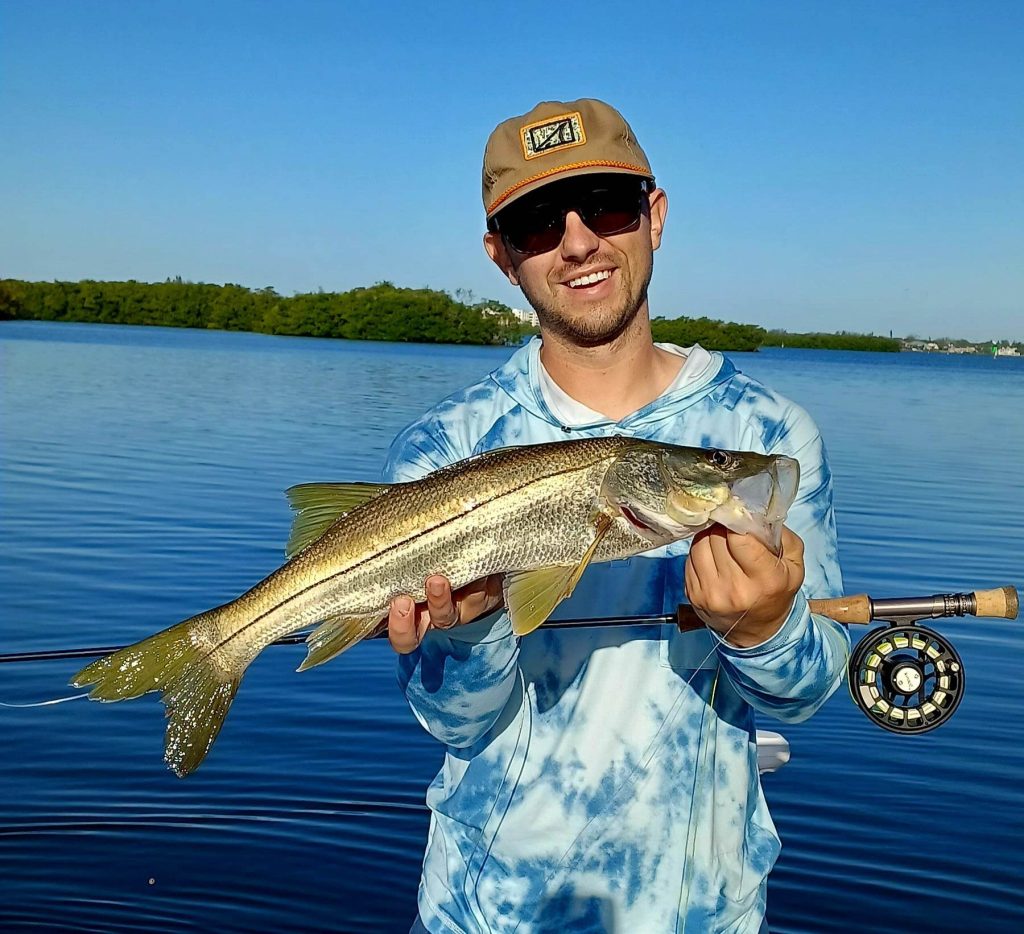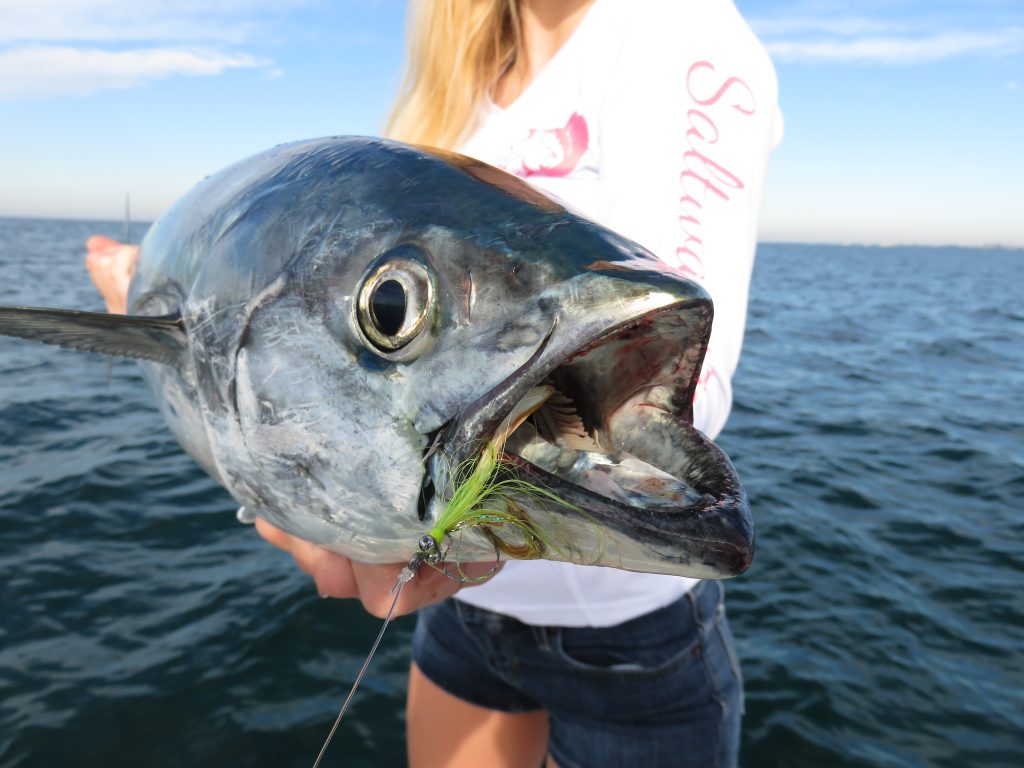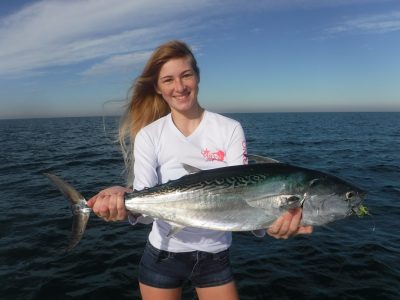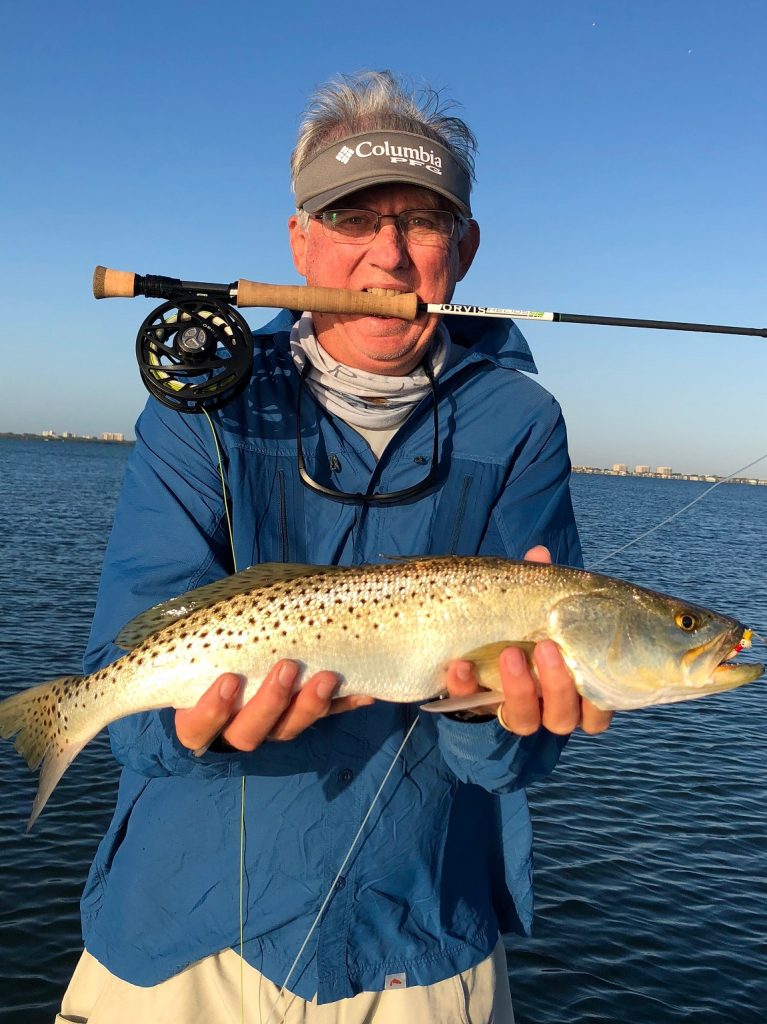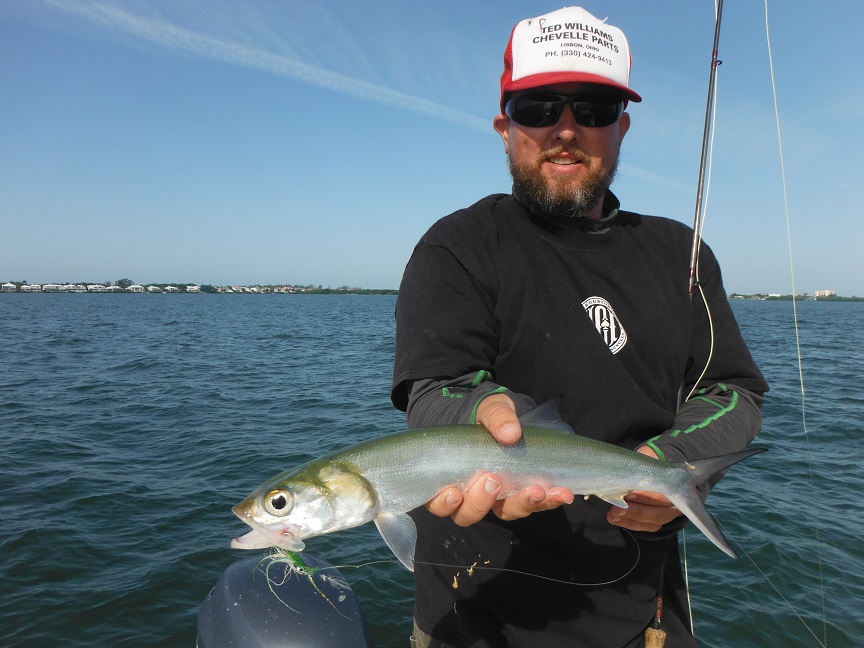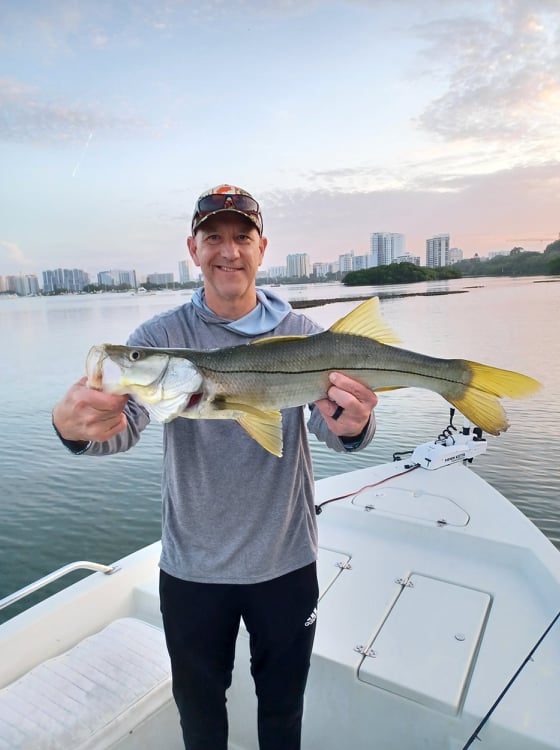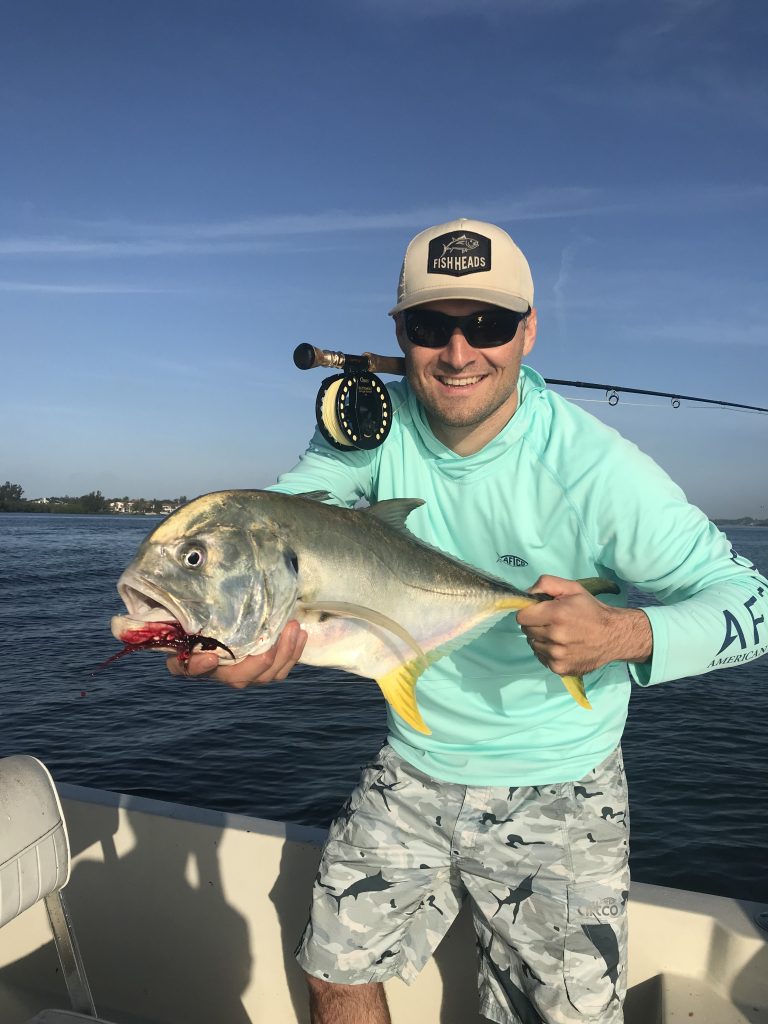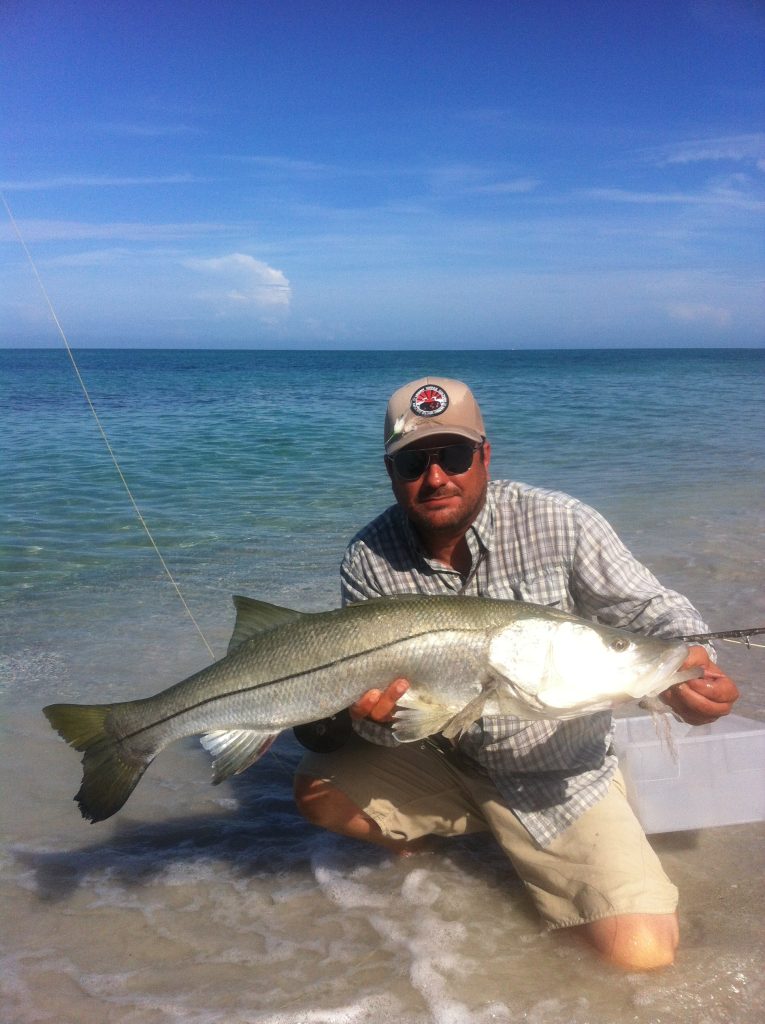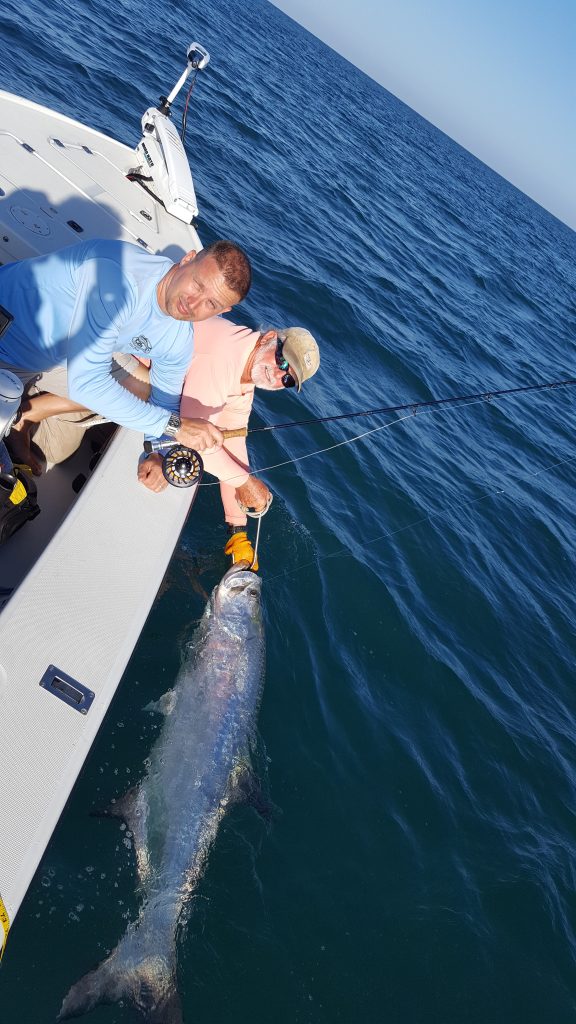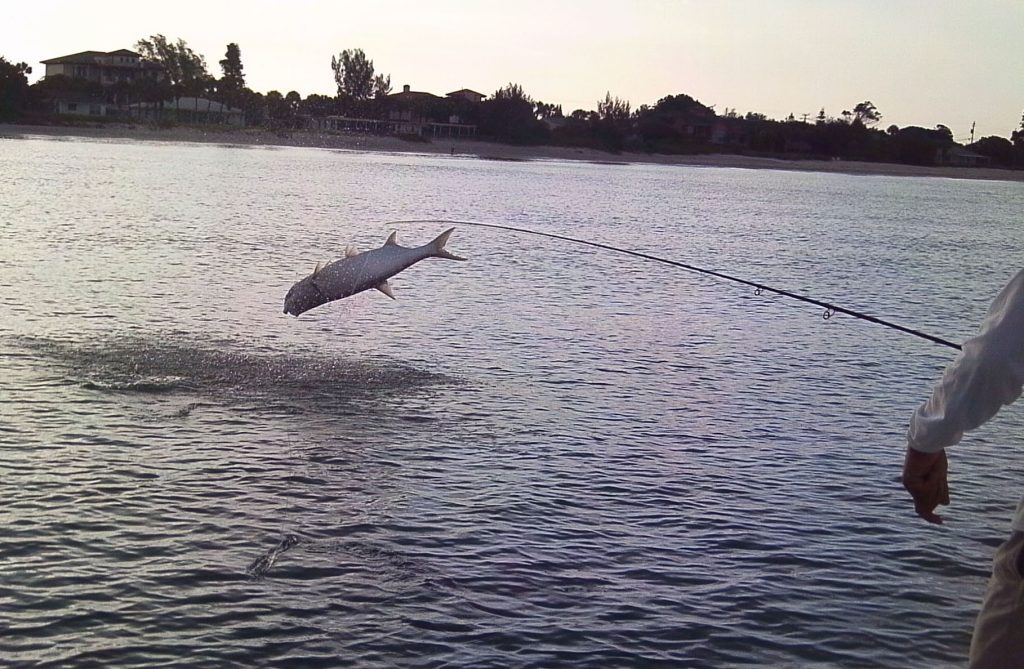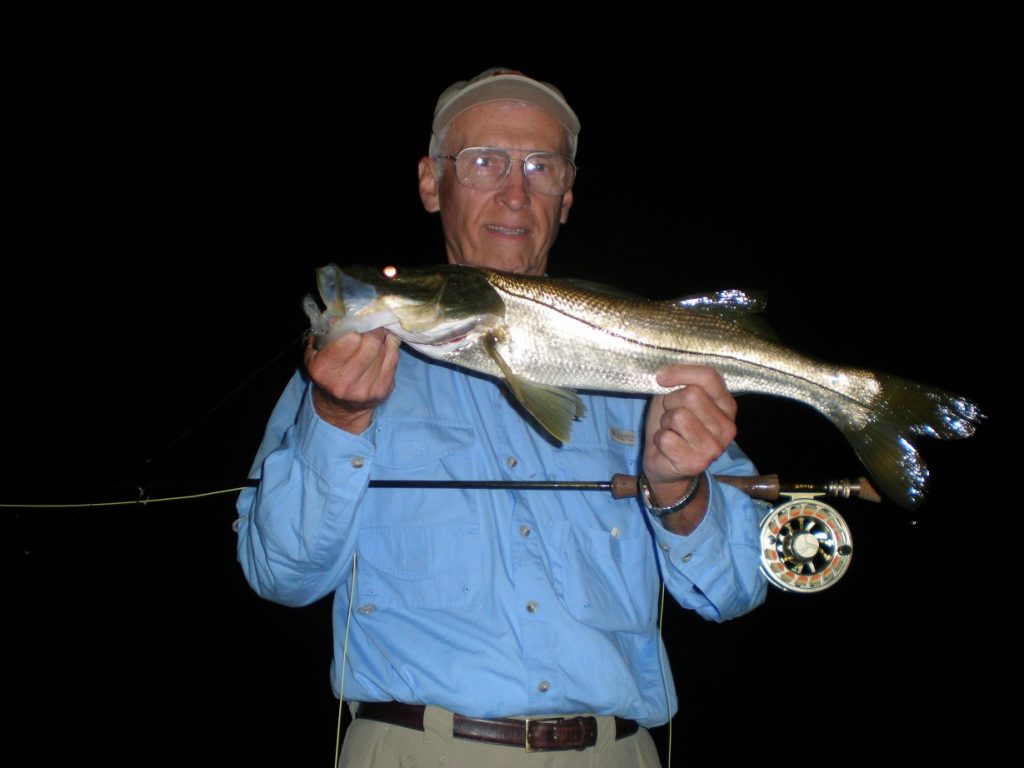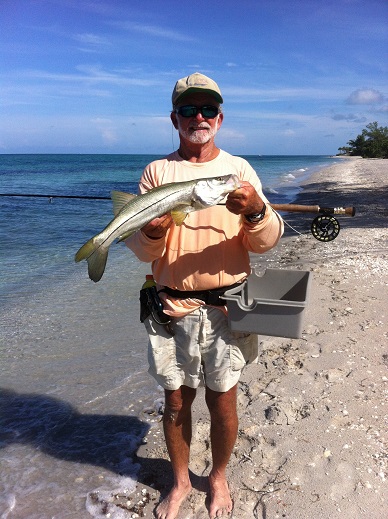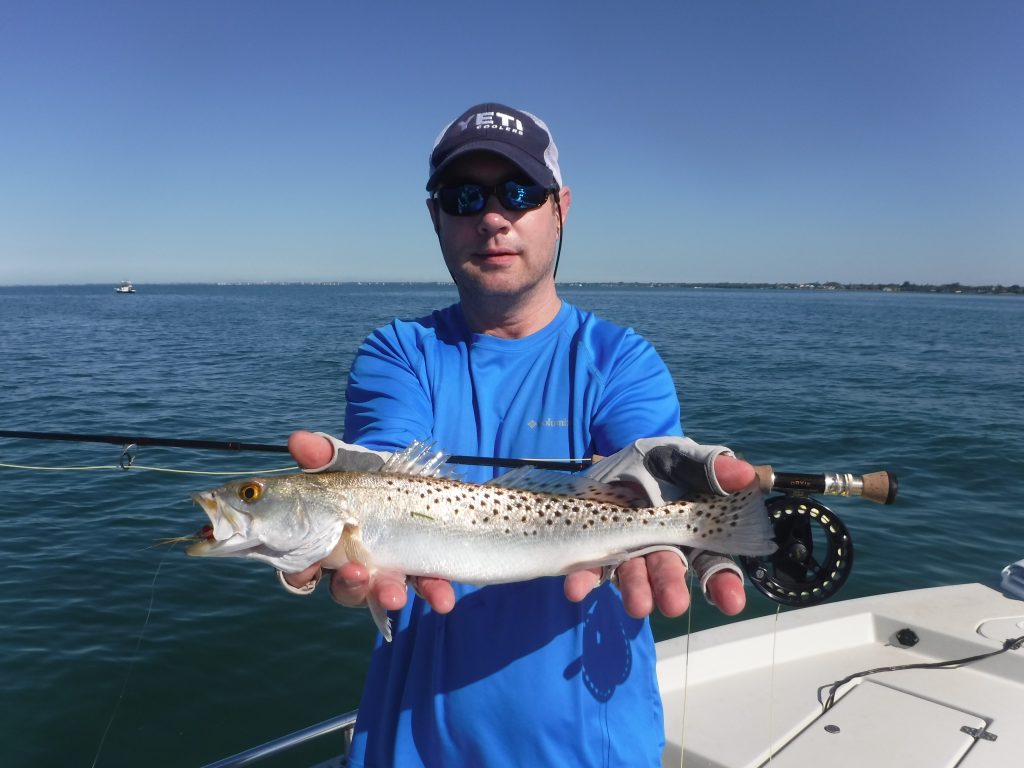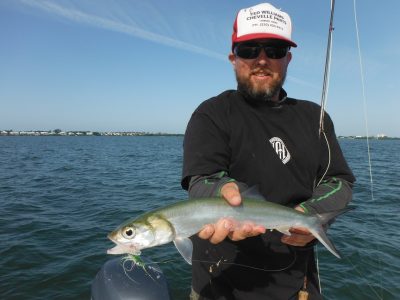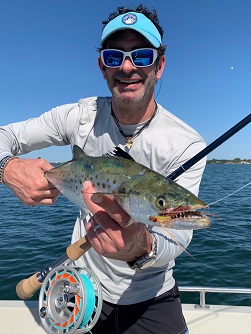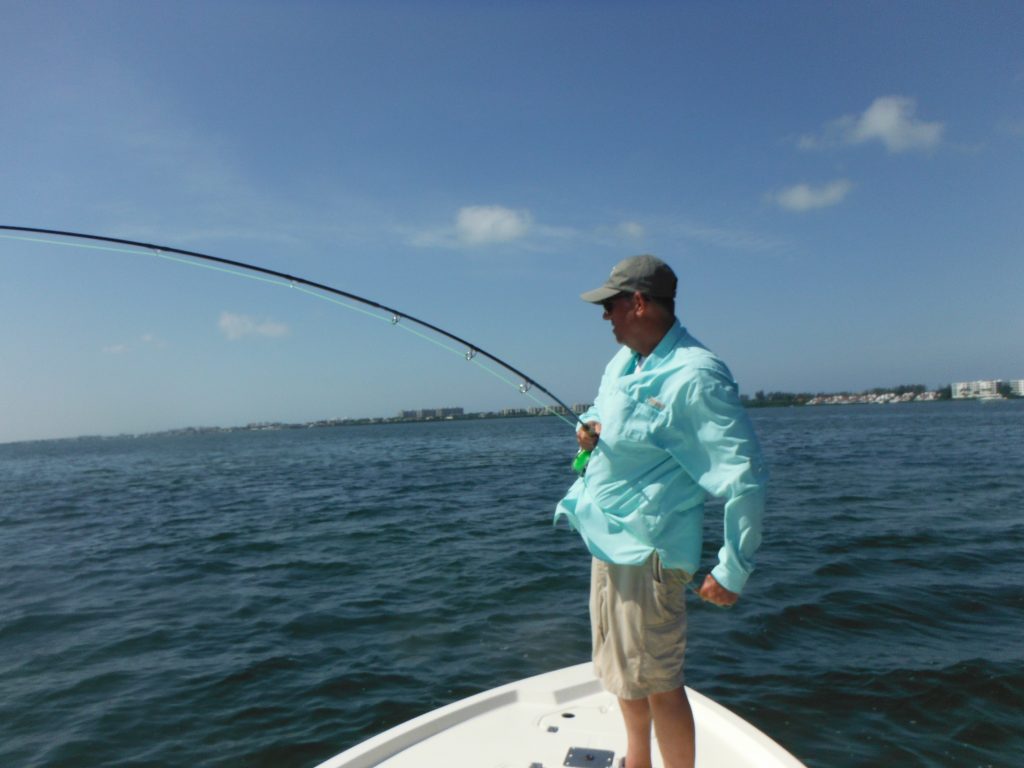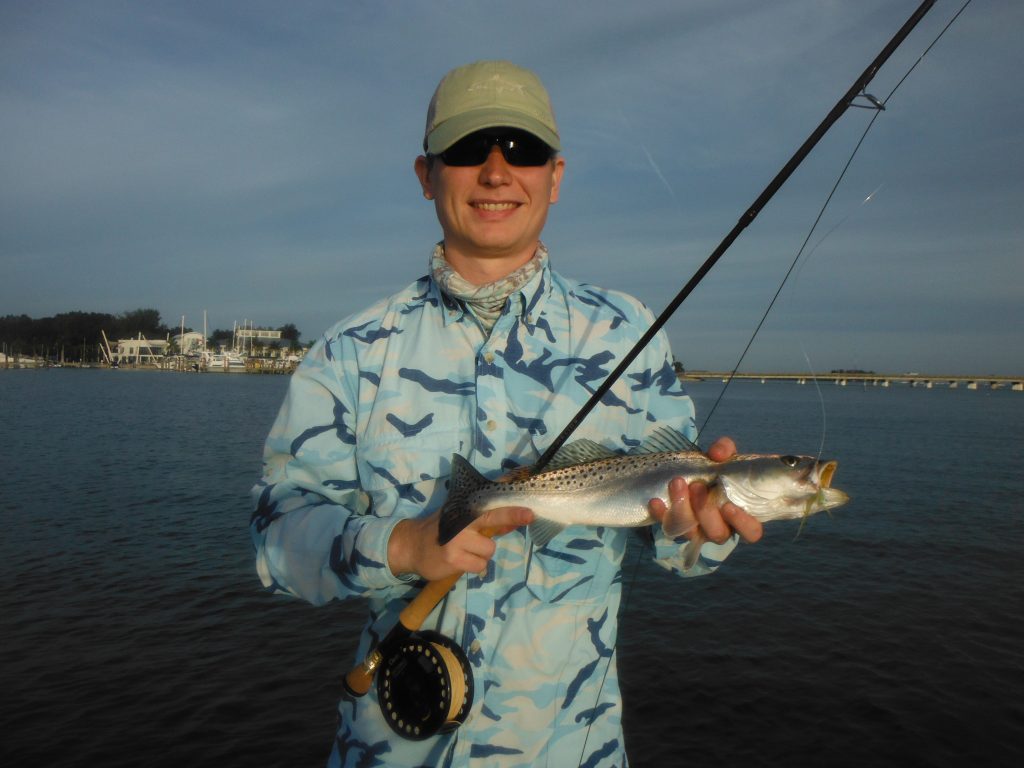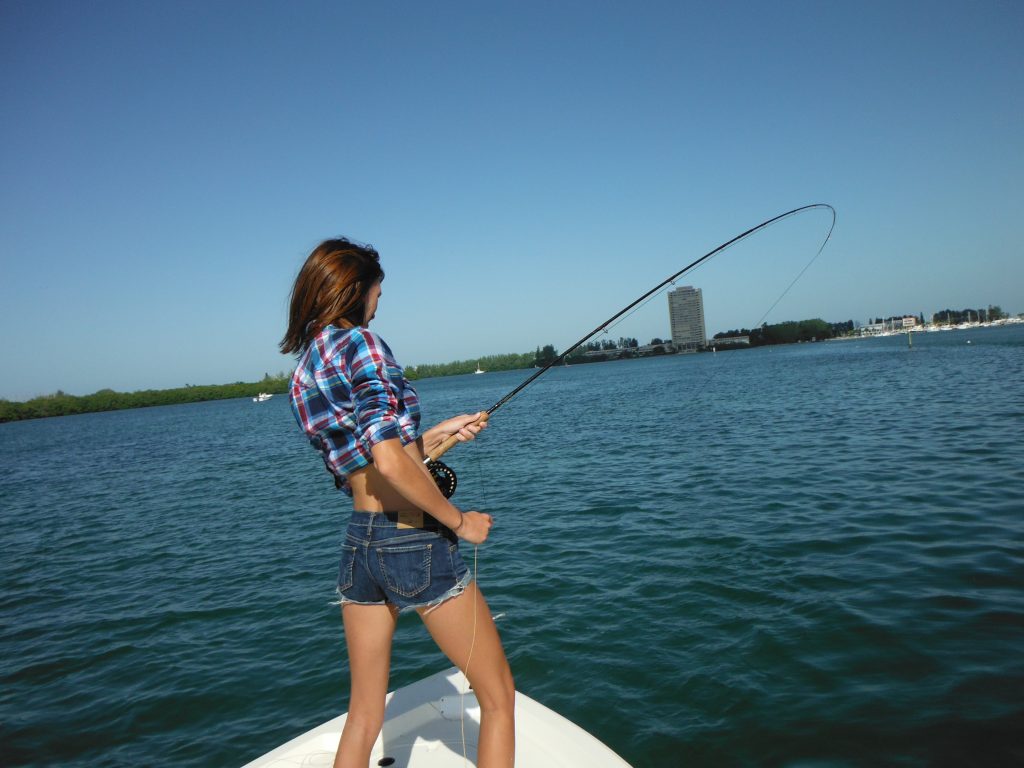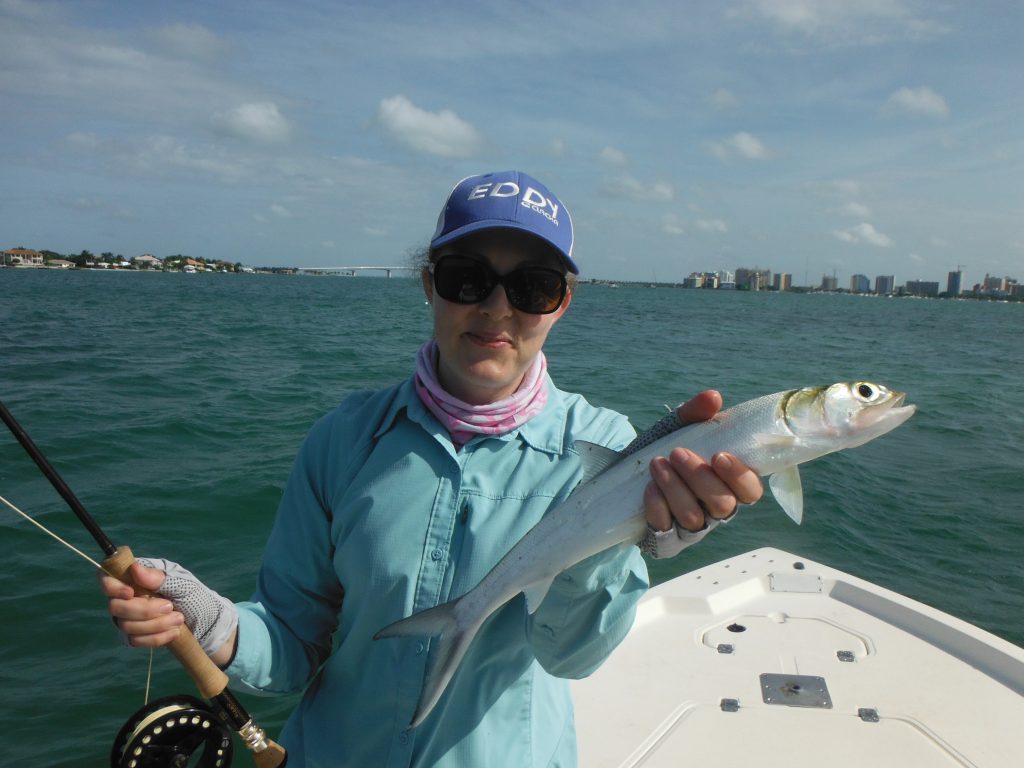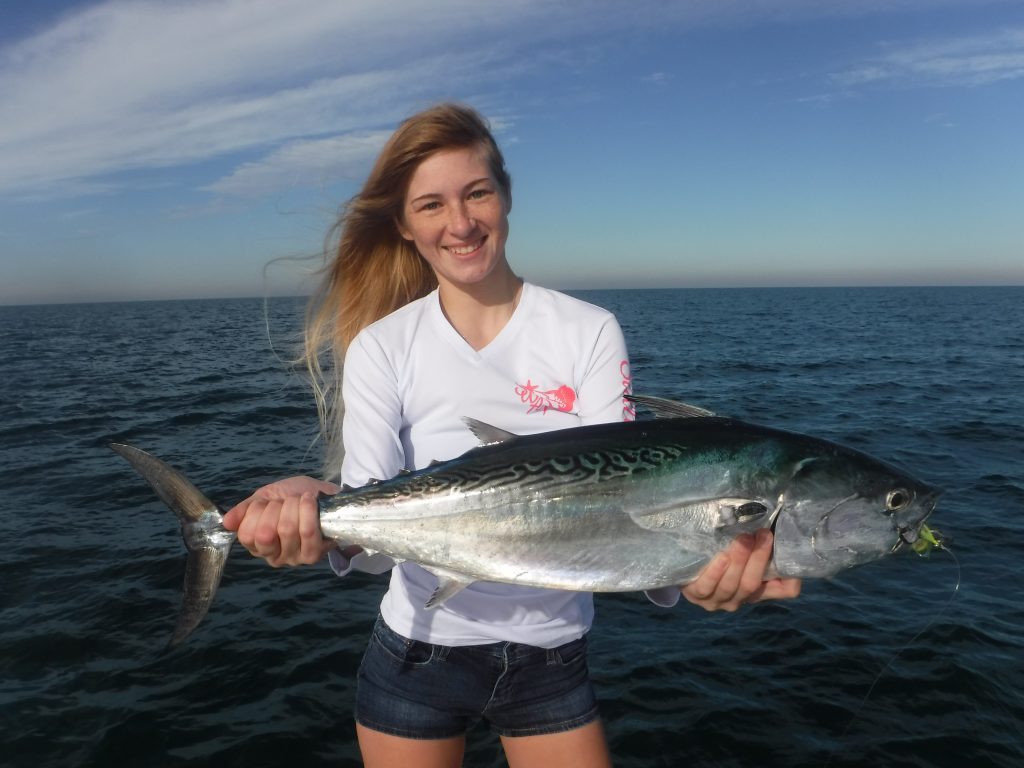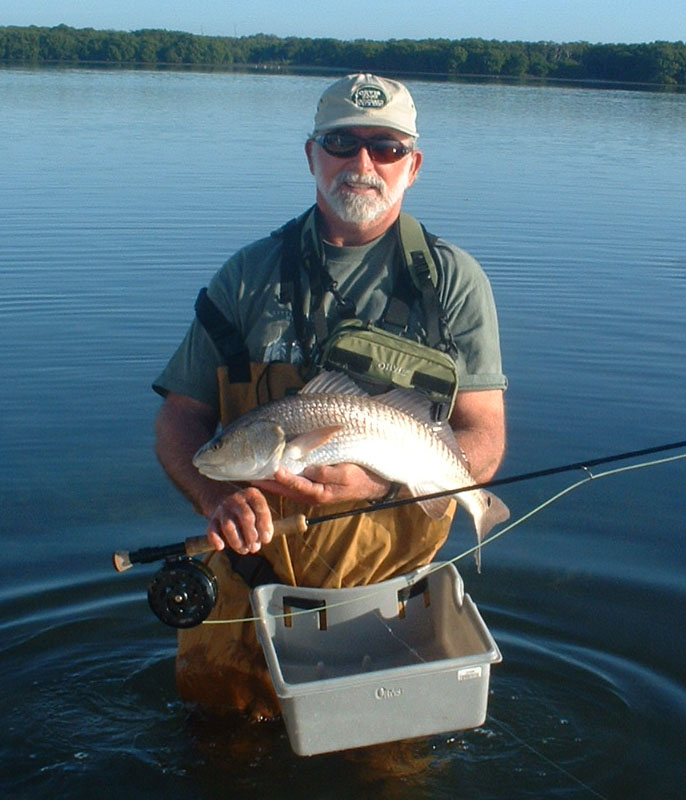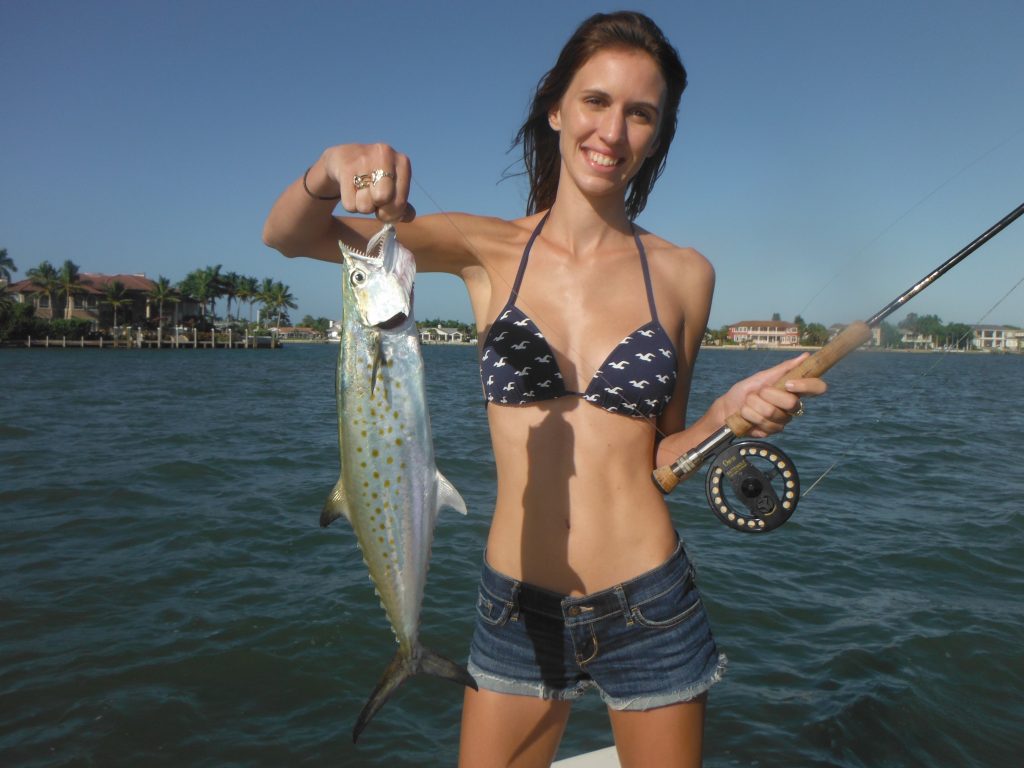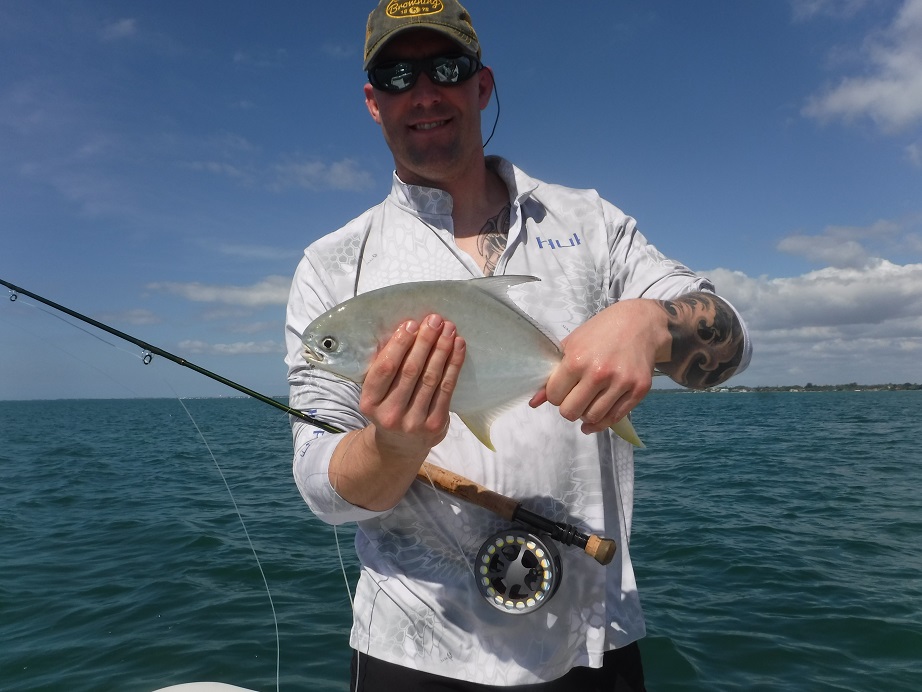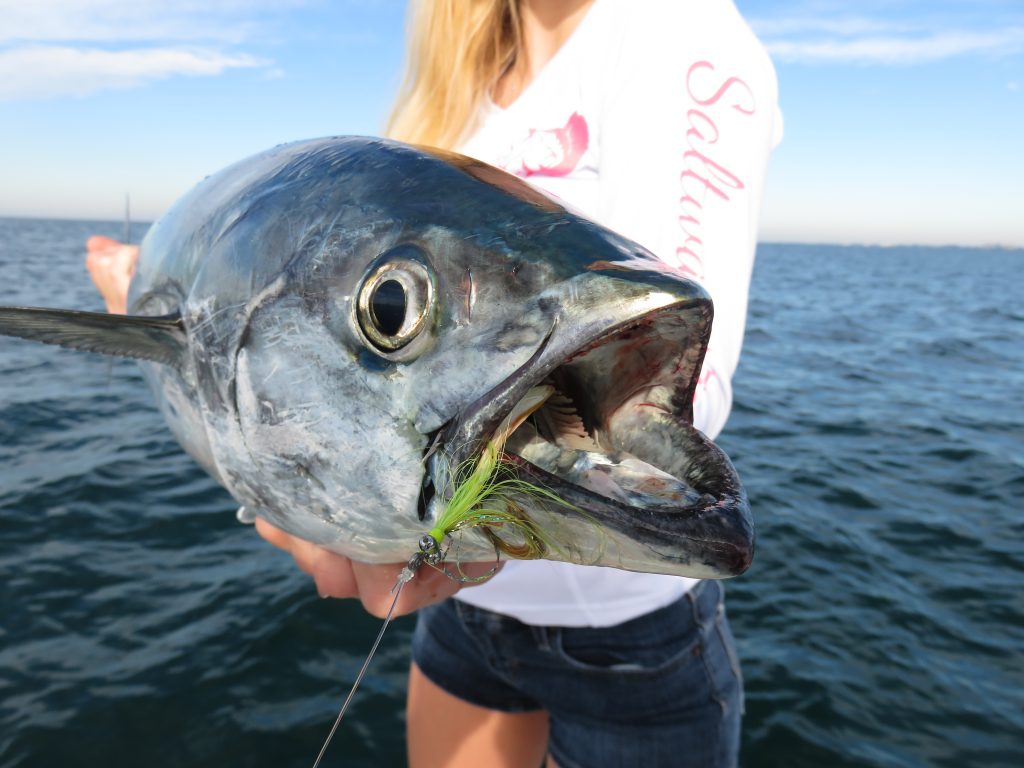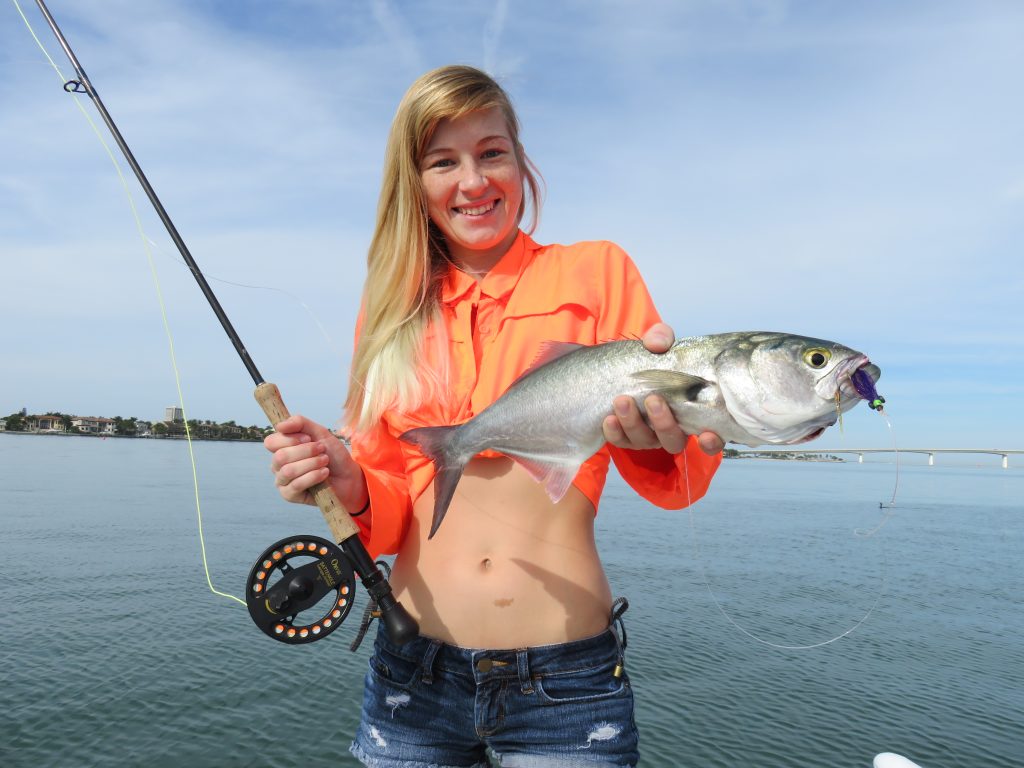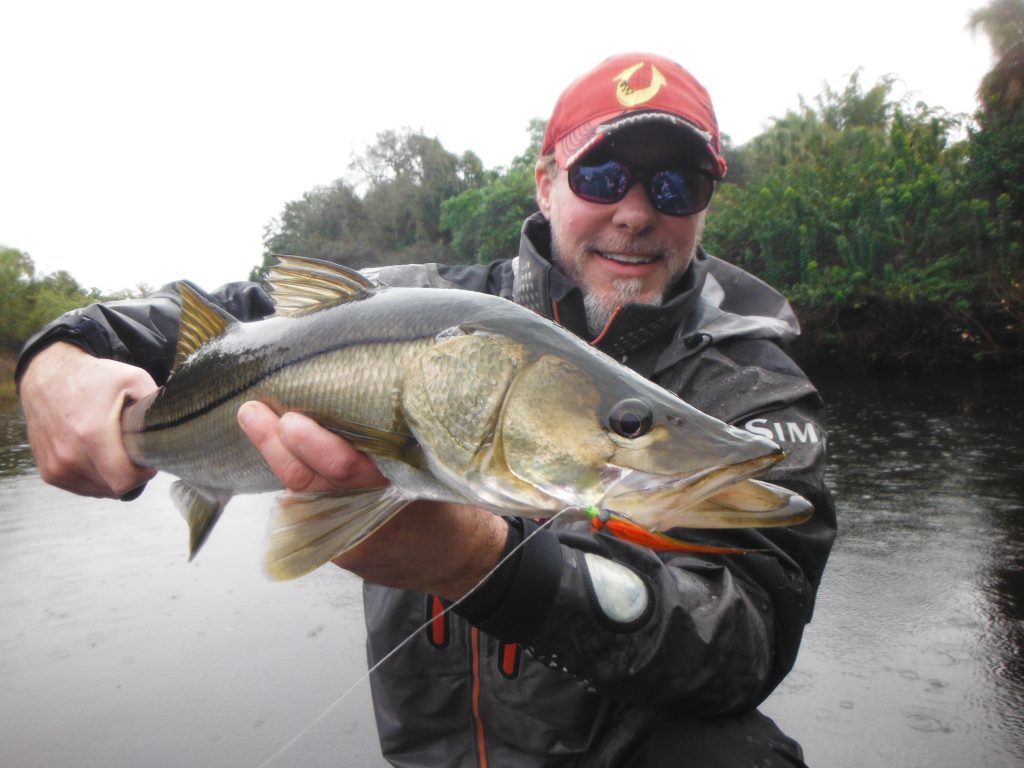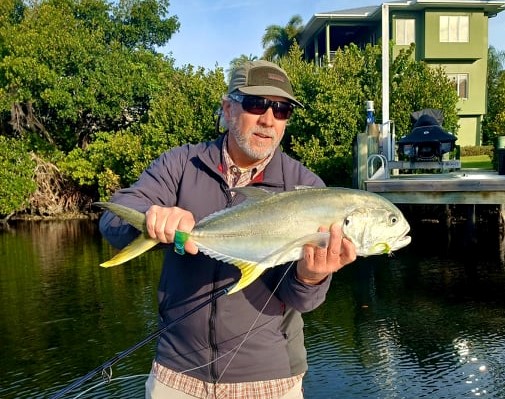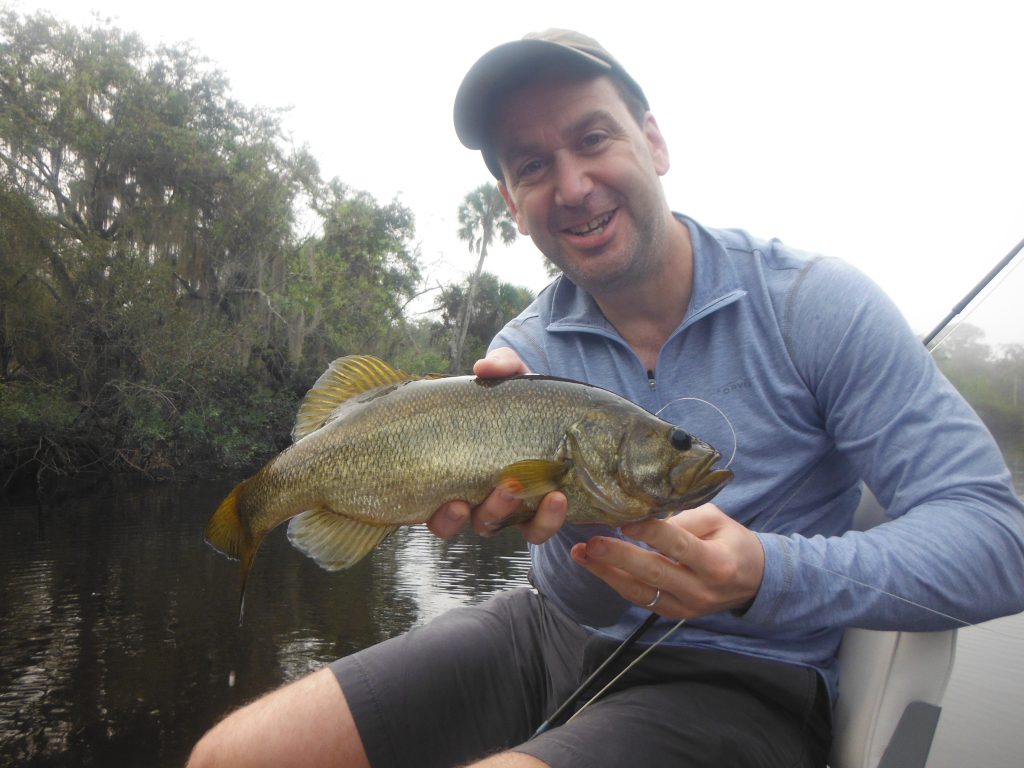Fly Fishing Little Sarasota Bay
The topic of this article will be fly fishing Little Sarasota Bay. Little Sarasota Bay, or “the little bay” as it is known locally is south of Sarasota Bay. It offers anglers good fly fishing opportunities and has several advantages over the larger more open areas of Sarasota Bay. For the most part, this is a cool water fishery as the water warms up quite a bit in summer and there’s also the infusion of rainwater that can result in the salinity being a bit too low.
Little Sarasota Bay runs basically from Siesta Dr., Bridge south to Blackburn point bridge. The environment is a bit different than Sarasota Bay, being dominated much more by oyster bars and mangrove shorelines than grass flats. In years past, there were some large expanse of grass flats, but these seem to have disappeared. Midnight Pass closed in the early 80s. This results in Little Sarasota Bay fishing more like a backwater as it is a long way from the Gulf of Mexico.
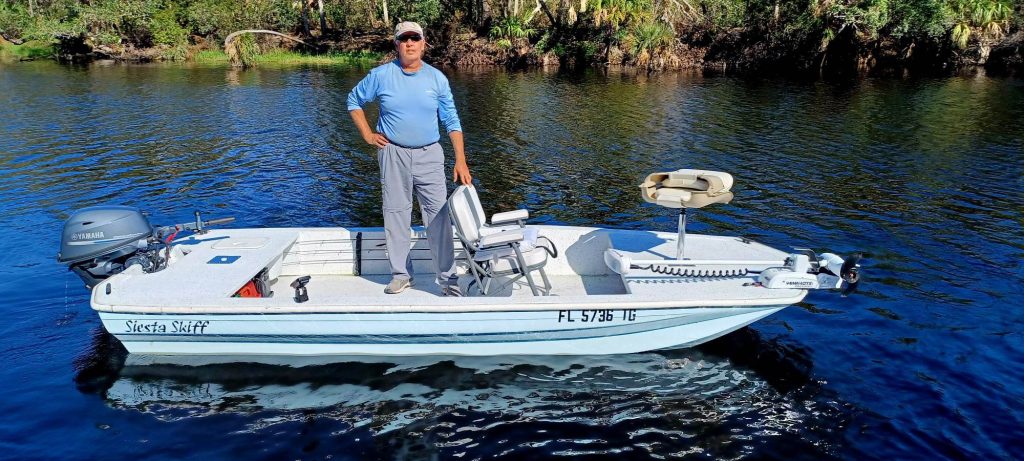
My name is Capt Jim Klopfer and I am a fishing guide in Sarasota, Florida. I have always enjoyed fishing the oyster bars, mangrove shorelines, and flats in Little Sarasota Bay. I recently added a 15′ Siesta Skiff to my fleet. I use it for river fly fishing charters, but it is perfect for a one angler fly fishing charter as well.
Fly fishing Little Sarasota Bay
Little Sarasota Bay offers fly anglers good opportunities for the primary game fish in our area. The snook is king and is the most highly sought-after inshore game fish. Redfish are also available and are easier to catch in this area as the water is not quite as clear. Jacks can be found cruising the bars in search of food. Speckled trout, generally larger than average in size, will take a fly cast out towards and oyster bar.
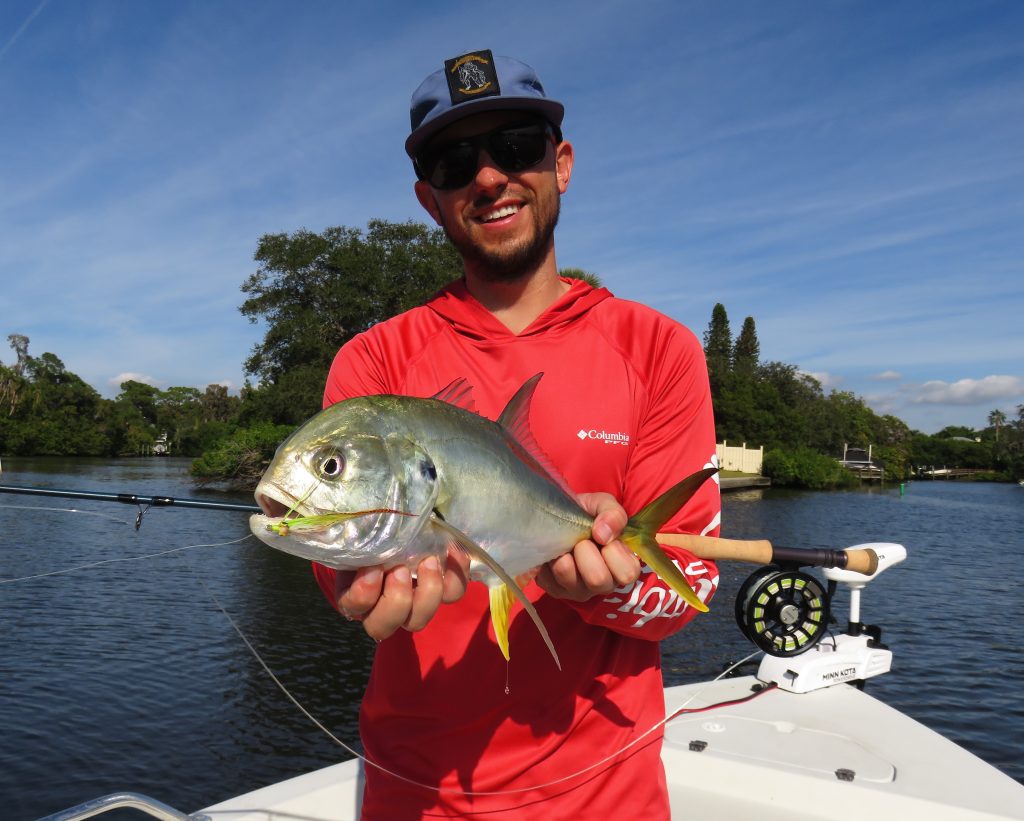
There are several advantages of fishing Little Sarasota Bay. One major one, particularly in the winter when weather can be a factor, is the fact that due to its smaller size it is more protected. The certainly makes it easier for anglers casting a fly. Another aspect is that the fishing spots are very close together. I will often work down the edge of and oyster bar or mangrove shoreline casting for redfish and look and then simply drift off into deeper water where speckled trout and ladyfish are an option.
Tackle and flies
And 8 wt is perfect for this situation. I most often use an intermediate sink tip line, but anglers can certainly use a floating line as well it’s most of the areas fish are fairly shallow. I just find the intermediate sink tip line to be more versatile. I use a 9 foot leader consisting of 5 feet of 50 pound fluorocarbon leader followed by 4 feet of 30 pound fluorocarbon leader. Most of the time I’m using a weighted fly, so the leader turns over fine.

I keep fly selection fairly simple. Snook are the primary targets, a #1/0 white Crystal minnow would be my first choice. For all round fishing, it is tough to beat a #1 or #1/0 Clouser Minnow pattern in white or chartreuse over white. If I had to pick one fly to fish with all the time in Sarasota, that latter chartreuse over white Clouser would be it. The third fly I use is a D.T Special, usually white. It works well on the open flats.
Tides, techniques, and tactics
Tactics and techniques used to catch snook, redfish, jacks, and other species are the same in Little Sarasota Bay as they are in other places. A low, incoming tide is preferred when chasing redfish. The lower water concentrates fish on edges as there is not enough water on top of the bar for them to get up and scatter out.
Read more about fly fishing for snook in Sarasota
The best tide for catching snook is a high, outgoing tide. Snook will stage at certain spots to take advantage of the title flow to feed. Top spots would include cuts and a mangrove shoreline, spots where small creeks enter the Bay, and the tips of oyster bars. Snook will be caught around docks and other man made structures as well.
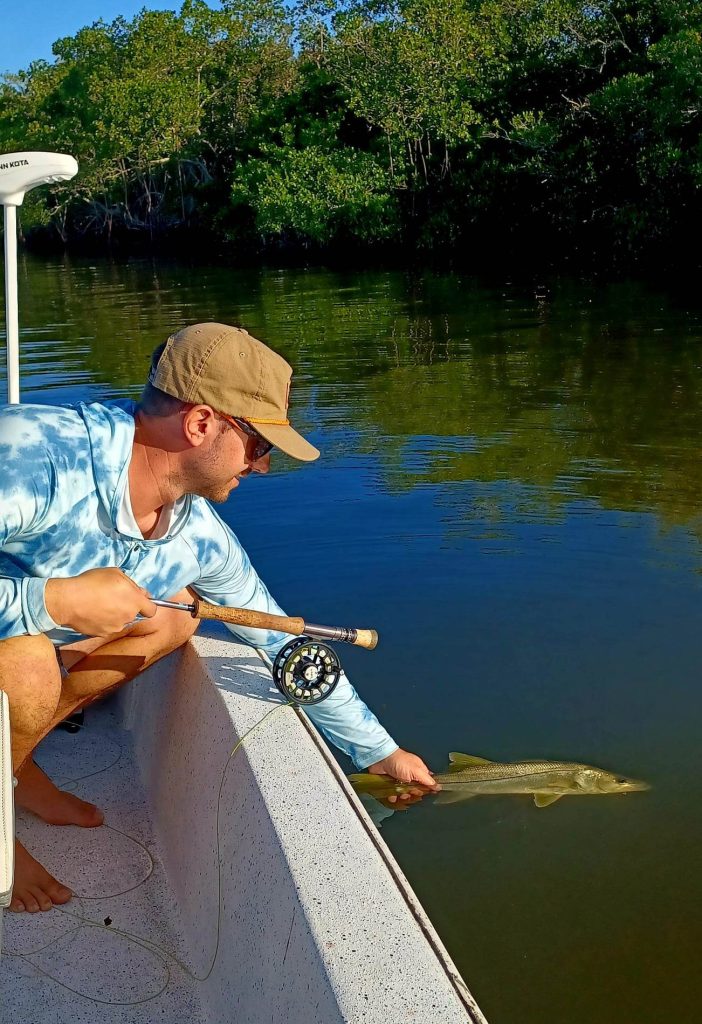
Jack crevalle are nomadic predictable and can be encountered just about anywhere in Little Sarasota Bay in the cooler months. They will often run bar up creeks, especially if it gets quite cold. Fly anglers will catch them by blind casting, but what is even more fun and exciting is to run across a school of jacks feeding aggressively on the surface. When this occurs, a strike is a virtual certainty.
One thing I have learned about fishing Little Sarasota Bay over the years is that it definitely fish is best on higher tide stages. In some areas, oyster bars drop off sharply to slightly deeper water. This is not as much the case with the little bay. The result is that on very low tides, especially negative low tides, there just isn’t enough water around the edges of the bars. Anglers can catch fish in the deeper residential canals and other locations. However, generally speaking, I definitely prefer to fish the higher tide stages.
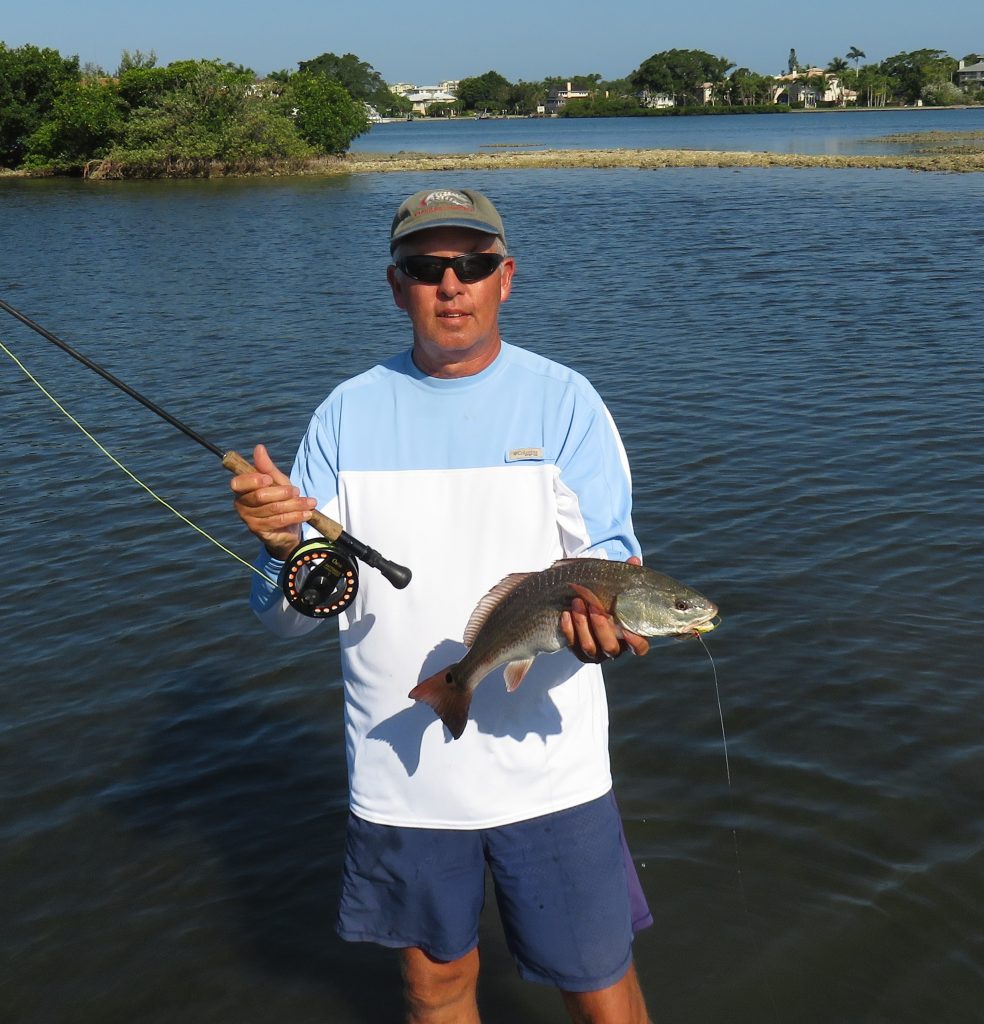
Drifting the flats in Little Sarasota Bay
I will drift the open flats in Little Sarasota Bay as well. This is usually done when targeting speckled trout, ladyfish, pompano, and other species. Sometimes bluefish and Spanish mackerel will move up that far into the Bay. The most reliable spots for doing this are the large flats south of Spanish point on either side of the bay. These areas tend to have the most reliable grass beds.
The technique for drifting the flats is quite simple. As the boat drifts along, anglers cast the fly out in front, allow it to sink a few seconds, then retrieve it back in. Often times in winter the ladyfish in particular will stack up down in this section. While perhaps not as glamorous to some anglers, they put up as good a battle on fly as any other 2 to 3 pound fish. Drifting the flats for trout, jacks, ladyfish, and other species is an excellent option for a novice angler or for one looking for more action.
As is almost always the case, conditions and angler expectations determine where and how I fish. As mentioned earlier, due to the relative small size of the Bay, there is almost always a protected side to fish. Once the wind picks up over 15 mph, fly fishing is tough no matter where you go.
In conclusion, this article on fly fishing Little Sarasota Bay will help anglers understand the options available to them and help them achieve success on this smaller, underrated little body of water!
